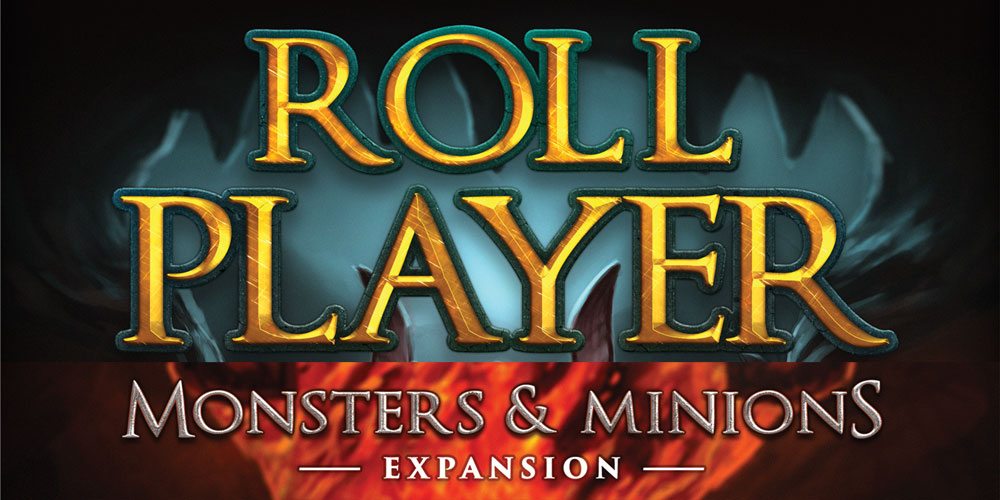Roll Player, the character-building dice game, is back with an expansion—now, not only are you putting together your ideal RPG character, but you’ll also have the chance to battle monsters (and their minions).
At a glance: Roll Player: Monsters & Minions is an expansion for Roll Player; it’s for 1 to 5 players, ages 1o and up, and takes 60–120 minutes to play (depending on number of players). It does require a copy of the Roll Player base game to play. It’s currently seeking funding on Kickstarter, with a $39 pledge for a copy of the expansion (or $89 for the base game + expansion). The game features a lot of traditional fantasy RPG elements and I think the 10+ age rating seems about right.
New to Kickstarter? Check out our crowdfunding primer, and visit our Kickstarter curated page for more projects we love.

Components
- 43 dice
- 25 Combat dice
- 11 Boost dice
- 7 Attribute dice
- 2 Character sheets
- 6 Class cards
- 20 Gold Coins
- 30 XP tokens
- 12 Monster cards
- 54 Adventure cards (9 per monster)
- 16 Minion cards
- 27 Market cards
- 3 Initiative cards
- 10 Injury tokens
- 10 Honor tokens
- 15 Adventure tokens
- 5 Player Aid cards
- 5 Cost Reference cards
Note: My review is based on a prototype; much of the artwork is finished but the component quality does not match the finished game, and things could still be subject to change. The photos you’ll see here include a finished copy of the base game mixed with a prototype of the expansion, so the card colors and quality don’t match. Overall, though, the artwork matches the base game and looks good—if you like the style of the original, then you’ll like these as well.
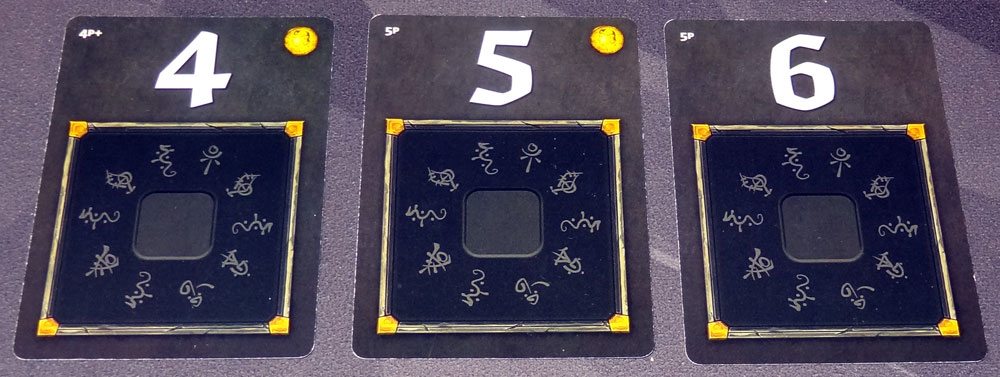
The expansion adds enough components to expand the game to 5 players (the base game only goes up to 4), including one more die of each color. The combat dice are smaller red dice that are rolled when fighting minions and the monster, but do not go into the character sheets, so it’s nice that they’re a smaller size and easily distinguished. The boost dice are translucent colorless dice, and they have values from 3 to 8, unlike standard six-sided dice.
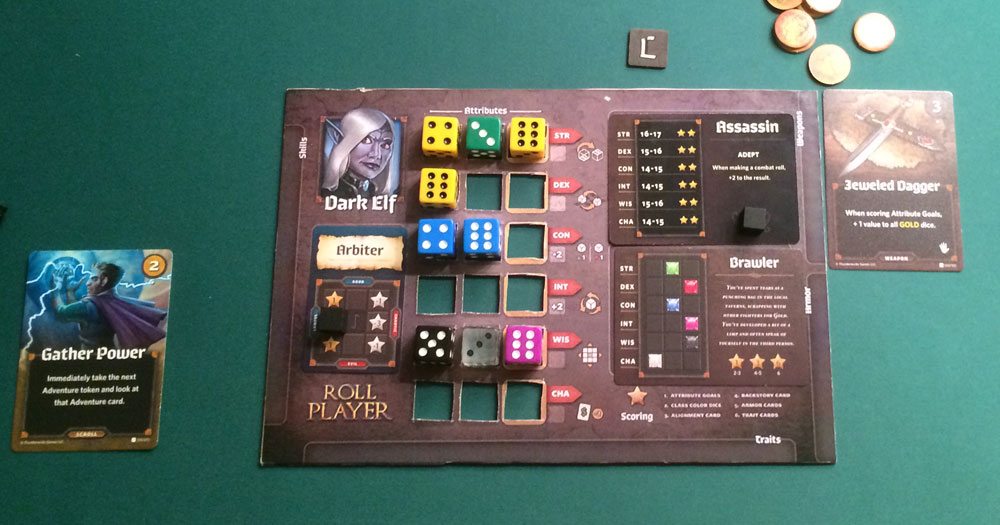
The two new character sheets are the Dark Elf and the Gnome, each with different strengths and weaknesses when it comes to their attributes. As with the base game, the sheets are double-sided so that you can use a male or female character, which is a nice touch. The new class cards give two more options for each class color, and they have special abilities that tie in to the new game mechanics. However, you can still use the class cards from the original game as well—players just get more options to choose from now.

Monster cards are oversized cards, with a big portrait of the monster above its special ability and its point values for various combat results. There are two different versions of each of 6 monsters—one is for solo play and one is for multiplayer games. Each of the monsters is tied to one of the six class colors, as indicated by the card label at the bottom (though I do wish the black and white monsters were a little more distinct).
Overall, the expansion components look nice and I expect them to be the same quality as the original game. The one thing I noticed was that each card has a tiny die at the bottom with a “2” showing, indicating that these cards are in the expansion. (The base game cards have a “1” die, but I never really noticed until the expansion.) It’s nice to have a way to sort out the cards in case you want to pull out the expansion, but those dice are very, very tiny, and it might have been nice if they were a little bigger.
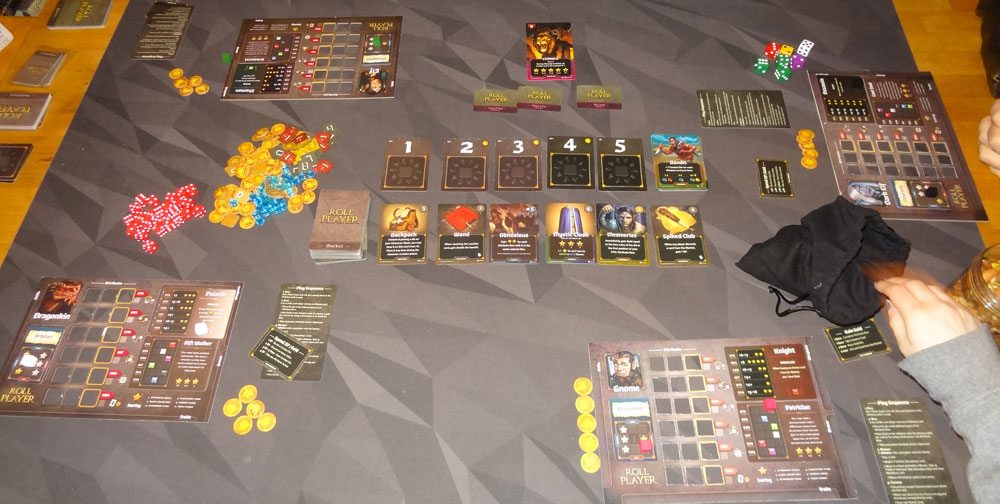
How to Play
A draft of the rulebook is available for download here.
Since Monsters & Minions requires the base game to play, I’ll refer you back to my Roll Player review for the specifics there, and just focus on what’s new this time around. There are some rule tweaks for when you have 5 players, but much of the game flow is the same, with the addition of fighting minions and the monster.
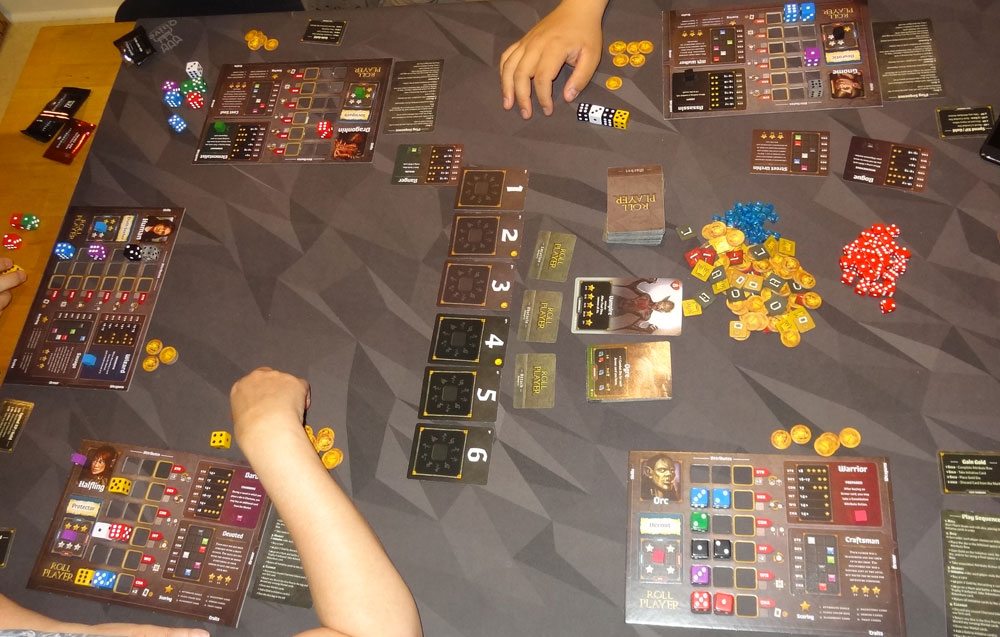
When you set up, you add in the new boost dice and the attribute dice (but not the combat dice) to the bag. The boost dice, as I’ve mentioned, have higher values—but they also have no color, so various things that allow you to score for having matching colors do not work on those. The rest of the initial setup is very similar: players get a race, class, alignment, backstory, some starting gold, and some starting dice.

Once everyone has a class, you also pick a monster—draw one randomly from a color that has not been taken by a player. For instance, if a player has taken the blue class for their character, then you would leave out the Kraken, which is the blue monster. The monster is placed face-up on the table. Each monster has 9 associated adventure cards—3 Locations, 3 Obstacles, and 3 Attacks. You randomly draw one of each type, and place them face-down on the table. These three cards will list ways to get advantages during combat with the monster, and you’ll have an opportunity to look at them during the game.
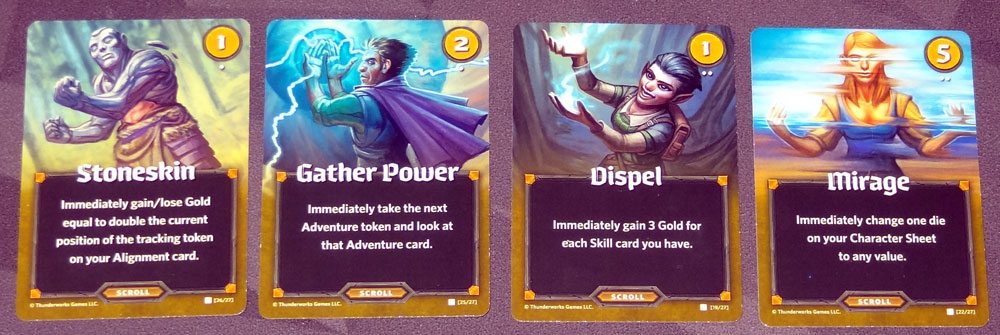
The Minions are put in order, from the easiest on top to the hardest on the bottom. The new market cards are added to the deck—most of these are new cards in the categories you’ve seen before (armor, weapons, traits, skills), but there’s also a new type: scrolls. Scrolls are one-time-use abilities that take effect as soon as you buy them, and then are set next to your player board for reference.
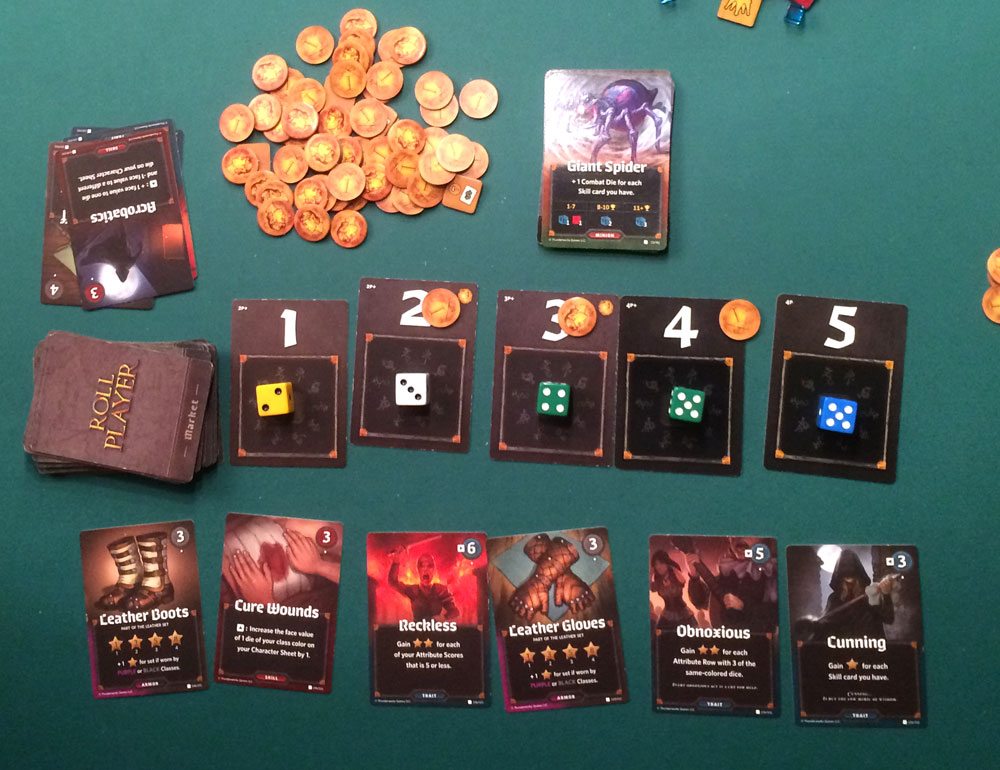
The gameplay is largely the same:
- Roll Phase: Starting player rolls dice and puts them on initiative cards.
- Dice Phase: Draft dice (and initiative) in turn order. The one change here is a suggestion that instead of actually picking up the initiative card, just place your extra wooden cube on the card in place of the die, and then everyone can see who took what die without having to replace the cards every round.
- Market Phase: Buy a card from the market, or discard a card from the market to get 2 gold. And now, you have another choice: go on a hunt.
- Cleanup Phase: Discard remaining market cards and refresh the market, put the leftover die back in the bag and pass the dice bag to the next player, and start a new round.

The new action, going on a hunt, is where you go fight minions. You can fight the top minion, or pay 2 gold to cycle the deck. You always get 1 combat die as a default, but the minion itself may give you additional dice for meeting certain requirements. Also, you can spend XP or gold to get additional dice. You roll your dice, and compare your result to the minion’s chart: you may earn XP, gold, honor tokens, or injuries. XP may be spent to re-roll dice, get more combat dice before a fight, heal injuries, or even take an extra attribute action. Honor tokens are worth 1 extra pip during the final monster fight, and injury tokens are worth -1 pip during the final fight.
Also, if your combat result has a trophy next to it, that means you’ve killed the minion and keep it as a trophy. You get to look at the next adventure card in order (Location, Obstacle, Attack) and then take the corresponding adventure token (L, O, A) to indicate that you’ve already seen that card. If there isn’t a trophy, the minion escapes and goes to the bottom of the deck.

Once everyone is finished creating their characters—when all of the dice spaces are filled on the character sheets—then there’s one more fight against the monster before the game ends. Everyone may spend XP to take attribute actions or heal injuries, and then you prepare for battle. You start with 1 combat die by default. Then you reveal the adventure cards in order, giving players extra combat dice if they meet the requirements shown. Finally, players have the opportunity to get more combat dice by spending XP or gold.
Everyone rolls their own combat dice, trying to meet or exceed the health value shown on the monster card. You may spend XP to reroll dice. Then, once your final roll is complete you compare your result to the chart on the monster card—the higher your roll, the more points you earn. (Note that each monster has an ability that will affect the fight.)
After the battle, add in all of the other scoring from the base game: attribute goals, alignment, backstory, class dice, traits, and armor. Highest score wins, with ties broken by most gold, and then fewest class color dice.
For those of you who want less hidden information, there’s a variant rule that has you play the adventure cards (Location, Obstacle, and Attack) face-up instead of face-down, but I prefer the hidden version.
The game also includes rules for a solo variant, in which the automated player will randomly take an initiative card and either discard a market card or cycle the minion deck. You use the solo version of the monsters, and some of the adventure cards have additional restrictions to earn extra combat dice.
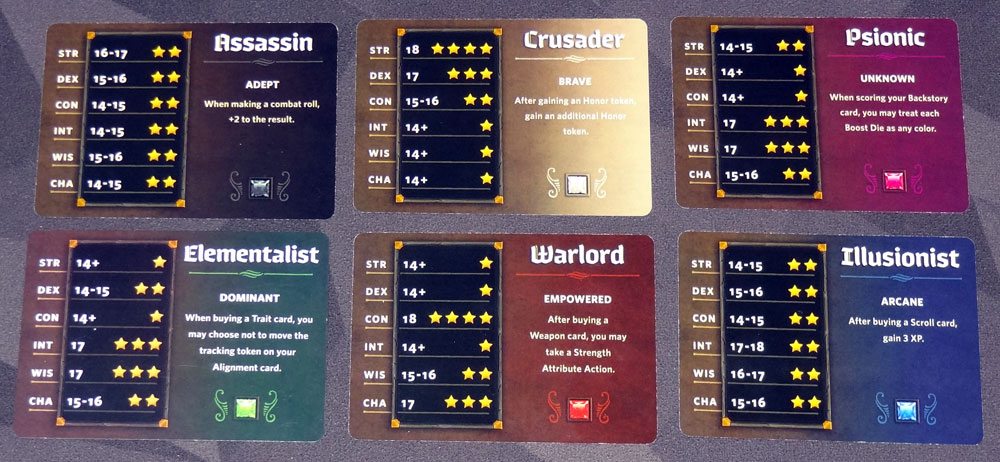
The Verdict
If you’re totally new to Roll Player, it’s possible to jump right in and learn the game with the expansion (I’ve introduced it to a few people who hadn’t played the base game before), but it can be a lot of rules thrown at you all at once, so it’s still easier to start with at least a play of the base game first. However, I’ve had a couple players remark that they can’t imagine playing Roll Player without the Monsters & Minions expansion now.
If you liked Roll Player, then chances are good that you’ll like Monsters & Minions. It adds another layer to an already excellent game, and gives everyone more options during play. In the base game, during the market phase, you either buy a card from the market, or you discard a card to get gold. That can be an interesting choice, particularly if you’re able to throw away a card that somebody else really wanted, but discarding a card for gold is never really satisfying and, unless you have some particular special effects, it seems like a last resort. In Monsters & Minions, you get another option—going on a hunt—that feels more rewarding, though it can be risky. If there’s nothing you want to buy in the market, you can try to gain XP, get more information about the final boss, and possibly even earn some gold (depending on the minion).
The final monster and the adventure cards are a fun element, and another way to score points. The monster itself is worth more points the more you roll (up to a limit), and the adventure cards will give you additional dice based on certain criteria. What’s important to note is that you’re eligible for those extra dice even if you haven’t gotten any trophies, and there’s also no guarantee that if you scout ahead and find out all three cards you’ll get the extra dice. It can be a gamble either way, but the sooner in the game you fight minions, the easier it will be to defeat them, and the more time you have to pursue those extra combat dice. On the other hand, if you can score more points through your character setup—all the things that scored points in the base game—then you might be able to just ignore all of the monster-fighting, and you might still be able to defeat it if you’re lucky. I do like the fact that there are six different monsters, and that each monster can have so many combinations of adventure cards, which can change your approach to defeating it.

Aside from the scrolls, which can provide powerful one-time effects, the new market cards include weapons, traits, and skills, many of which play with the new mechanics, such as boost dice, XP, and the adventure cards. Since the market for each game will be a mixture of base game and expansion cards, you never know for sure which ones will come up until you get them. As with the base game, some cards are more useful if you find them early on, and some can provide a nice late-game boost.
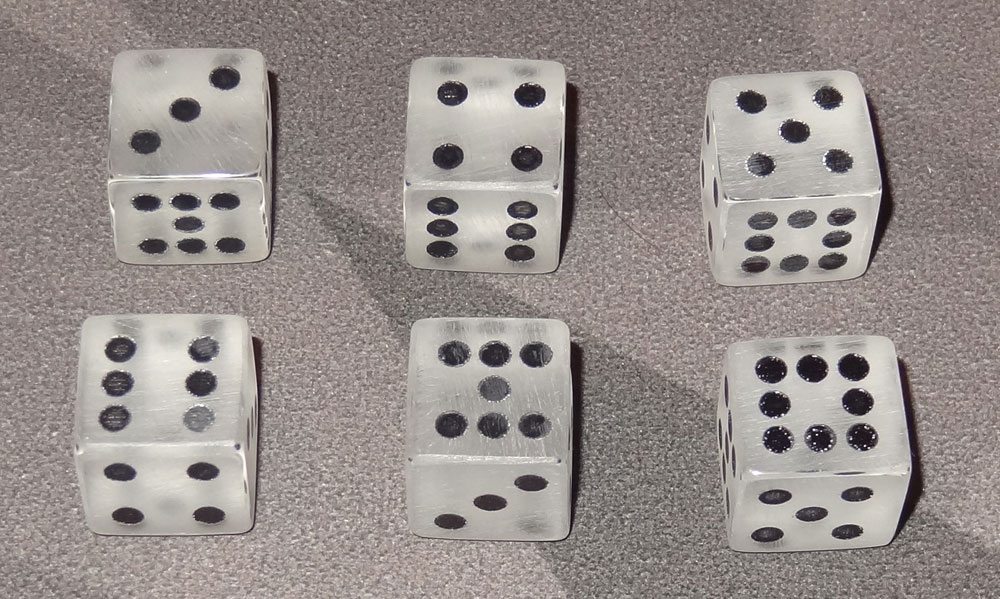
And speaking of boosts, the new boost dice can go a long way toward helping you hit your attribute goals. With values ranging from 3 to 8, you can hit some of those higher goals even if your race gives you a disadvantage. The trade-off, though, is that these dice don’t count as a color, so they’re not worth class dice points, and they don’t work with some of the traits that award points for particular color sets. However, if you’re really stuck on an attribute and just need a few more points, a boost die might come in pretty handy.
I think the only real complaint I have—and it’s admittedly a minor one—is that it feels a little funny thematically to introduce combat in a game that was about character creation. One of the things that really grabbed me about the original is that it’s a game in which you spend the entire game tweaking and outfitting your character, and the game ends before you actually do anything with it. In this game, you can go fight minions in the middle of character setup, which just seems kind of odd to me. But the added value in gameplay more than makes up for that thematic weirdness.
The expansion does increase the length of the game slightly, but not too much. Most of the added time in the estimated length is probably due to adding a 5th player, which I think is a welcome feature. It’s great to be able to break out Roll Player even with a slightly larger group now, even if it does extend the playing time.
Overall, I think Monsters & Minions is a fitting followup to a great game. I think I will probably still use the base game alone for teaching (for those who are new to the game), but otherwise I’d include the expansion every time.
For more information or to make a pledge, visit the Roll Player: Monsters & Minions Kickstarter page!
Disclosure: I received a prototype of this game for review.
